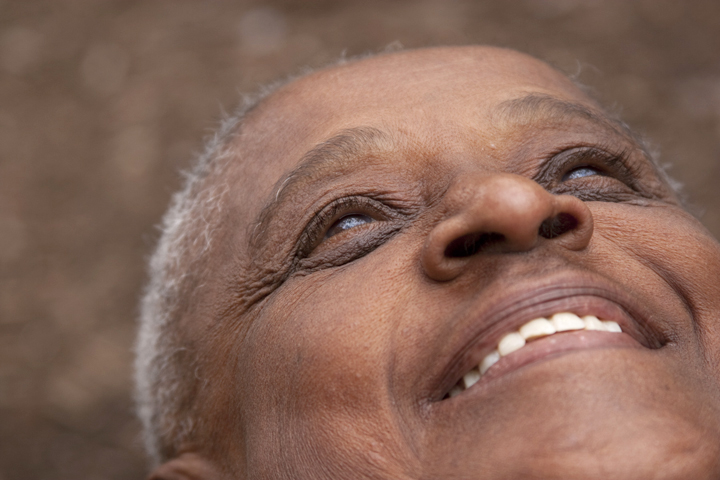If you spend any time in Detroit, you’ve seen them — the people huddled against buildings, standing at intersections holding signs, or sleeping under bridges.
But do you really see them? Bruce Giffin does. The longtime professional photographer was awarded a Kresge Arts fellowship this year for his project “The Face of Detroit.” He drives around the city and photographs street people, with their permission. While he’s looking for interesting faces, he says the project is also about showing the reality of these people who can be invisible.
An exhibit of his work is available in the lobby gallery of the Boll Family YMCA through the end of August. This will be the last time the exhibit is displayed. Giffin has done some photography for the Y, and it was a natural fit for him to have his creative work exhibited there.
The photos are mostly closeups, revealing the character and humanity in each person’s face. Giffin goes out to look for people to photograph and stops when he sees an interesting face, usually offering them a few dollars.The exhibit, which features about 40 prints out of 150 he has taken, will walk viewers through a whole gamut of emotions. The photos are presented without context except for the person’s name, usually. It’s all about the face telling the story, instead of Giffin doing so.
 Very few of the people he’s photographed have seen the final product, Giffin says. They tend to be hard to find, although sometimes he does run across them again and they always remember him.
Very few of the people he’s photographed have seen the final product, Giffin says. They tend to be hard to find, although sometimes he does run across them again and they always remember him.
One thread that runs through all the portraits is a strong survivor instinct, he says. One photo is of a young man in a suit, walking down the street at 9 a.m. on a Saturday morning with a sign that explained he was 18, ready to work, and had resumes. Giffin was very impressed by this young person trying to make it any way he could, at an time when many other people his age wouldn’t even be getting out of bed much less in a suit and literally pounding the pavement.
Another photo is of a man who uses a wheelchair and stays in a three-story abandoned house. He keeps a wheelchair on each floor, and maneuvers between them on his hands and knees,
“This is a kind of survival, and I think it’s in the drinking water in Detroit,” he says. “If you knock a survivor down they’ll keep getting up until you kill them.”
He knows his work can be difficult to think about, but he hopes people find the meaning in it. “These don’t really sell because they are not really happy pictures, but you will walk away inspired by how they choose to live their life, at some level.”

